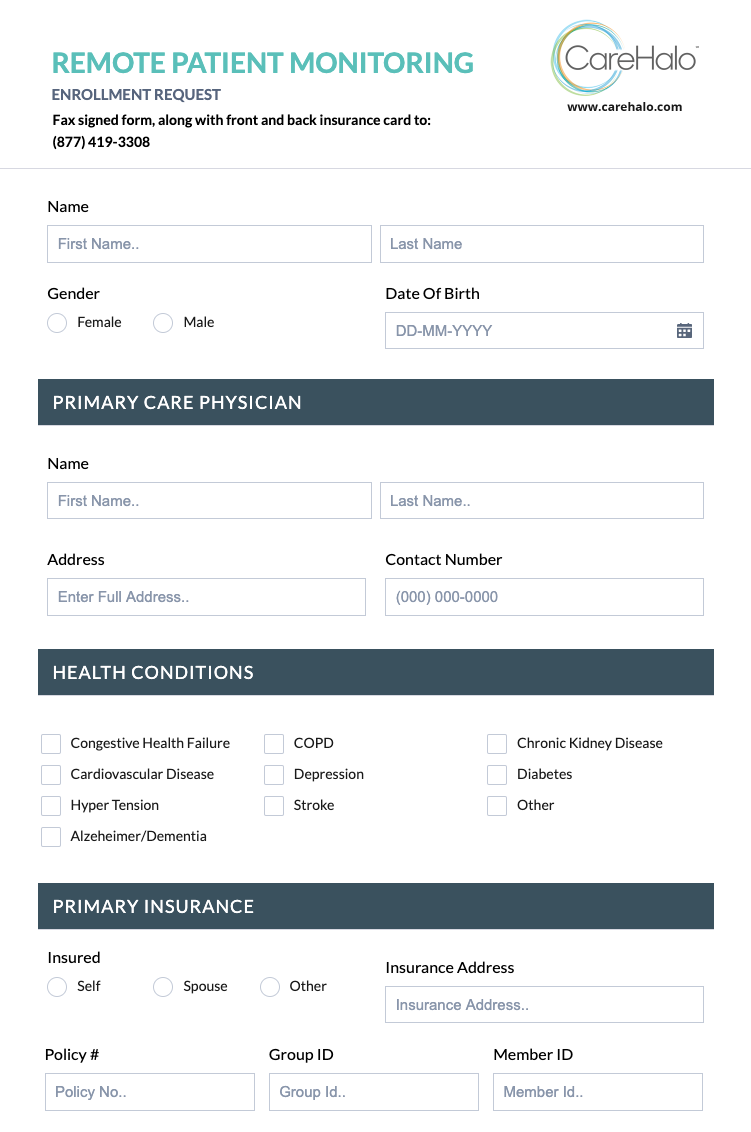User-Friendly Software for Remote Patient Monitoring: Easy Combination and Usage
Wiki Article
The Future of Healthcare: Remote Client Keeping An Eye On Simplified
As healthcare continues to progress, one area that holds tremendous guarantee is remote client tracking. The idea of streamlining this procedure through technological advancements is improving the method treatment is delivered and gotten. With a concentrate on boosting person end results and enhancing healthcare distribution, remote surveillance is positioned to change the sector. By checking out the advantages, technical technologies, and future trends in this field, we can obtain useful insights into the transformative possibility of remote client surveillance.Advantages of Remote Client Surveillance
Remote client surveillance presents a multitude of benefits for both medical care carriers and clients alike. In addition, remote patient tracking boosts the overall high quality of treatment by providing a much more holistic and comprehensive sight of patients' health status past conventional in-person sees.Furthermore, remote client monitoring can bring about better individual end results and contentment. Individuals can enjoy the ease of obtaining care in the comfort of their very own homes while still understanding that their health is being closely kept track of. This can cause increased patient interaction and adherence to therapy strategies, eventually leading to much better wellness outcomes. Additionally, remote tracking can minimize the demand for regular hospital gos to, lowering healthcare expenses for both clients and carriers. In general, the benefits of remote person surveillance are clear, making it a valuable device in contemporary healthcare shipment.
Technology Driving Remote Tracking
In the world of modern healthcare, technical developments play a crucial function in driving the development and efficiency of remote person surveillance. The assimilation of ingenious modern technologies such as wearable gadgets, mobile applications, and cloud-based systems has revolutionized the way doctor remotely manage and check individual health - best remote patient monitoring software. These modern technologies make it possible for continuous real-time surveillance of essential indicators, medicine adherence, and various other crucial health information, permitting timely interventions and personalized care strategiesOne trick modern technology driving remote tracking is the Internet of Things (IoT), which makes it possible for smooth connectivity between medical tools and healthcare systems. IoT tools such as smartwatches and cordless sensing units gather and transfer person information to central systems, promoting remote monitoring from throughout the globe. Expert system (AI) and artificial intelligence formulas better enhance remote surveillance by analyzing large amounts of individual information to identify patterns, forecast health patterns, and sharp healthcare suppliers to prospective problems.
Effect On Health Care Distribution
With the combination of advanced technologies driving remote individual surveillance, the influence on health care delivery is coming to be transformative and increasingly profound. Remote client monitoring enables doctor to provide more aggressive and tailored treatment to individuals, bring about boosted wellness outcomes and minimized health center admissions. By remotely tracking essential indicators, symptoms, and medication adherence, medical care experts can step in early, protecting against complications and enhancing the overall high quality of care.Furthermore, remote monitoring boosts access to medical care solutions, specifically for people in underserved or country locations. People can obtain constant tracking and assistance from their homes, eliminating the need for frequent in-person brows through. This not just saves time and minimizes expenses for both clients and health care facilities but also lessens the threat of direct exposure to infectious diseases, a vital factor to consider in the present medical care landscape.
In addition, remote individual surveillance enables medical care suppliers to much better allocate resources and prioritize treatment based upon real-time data. By recognizing high-risk patients and interfering quickly, health care distribution becomes much more effective and efficient, ultimately bring about an extra sustainable and patient-centered healthcare system.
Improving Individual Outcomes

Additionally, RPM permits for aggressive administration of persistent problems, decreasing the probability of intense worsenings and health center readmissions. Patients take advantage of boosted convenience and comfort, as they can obtain treatment in their very own homes while remaining attached to their doctor. This continuous surveillance not only enhances patient fulfillment yet likewise promotes a sense of empowerment and involvement in their own health and wellness monitoring.
Future Trends in Remote Surveillance
Accepting sophisticated technologies in remote individual monitoring is shaping the future landscape of medical care distribution. One significant pattern is the raised usage of wearable tools and sensors to gather real-time information, making it possible for healthcare providers to monitor patients constantly without the requirement for frequent in-person check outs.
Furthermore, telehealth systems are coming to be more innovative, enabling for digital examinations, remote medical diagnosis, and remote person checking all in one integrated system (remote patient monitoring software). This all natural approach to remote surveillance is streamlining healthcare distribution, enhancing individual contentment, and eventually, enhancing overall top quality of treatment
Verdict
Finally, remote person surveillance uses various benefits in healthcare distribution, driven by innovations in innovation. It has the prospective to enhance patient outcomes software for remote patient monitoring and change the way health care is delivered. Future fads in remote tracking will remain to form the landscape of health care, providing possibilities for even more effective and customized individual treatment.Remote client monitoring provides a multitude of benefits for both health care service providers and people alike. Additionally, remote patient surveillance boosts the general quality of treatment by providing an extra holistic and thorough view of people' wellness standing past conventional in-person sees.
In addition, remote client surveillance can lead to improved individual end results and satisfaction. Remote person tracking enables medical care providers to provide more tailored and aggressive treatment to patients, leading to improved health end results and reduced hospital admissions. Remote patient tracking (RPM) plays a significant role in improving client results by giving continuous, real-time data that allows health care carriers to interfere without delay and adjust therapy plans as required.
Report this wiki page